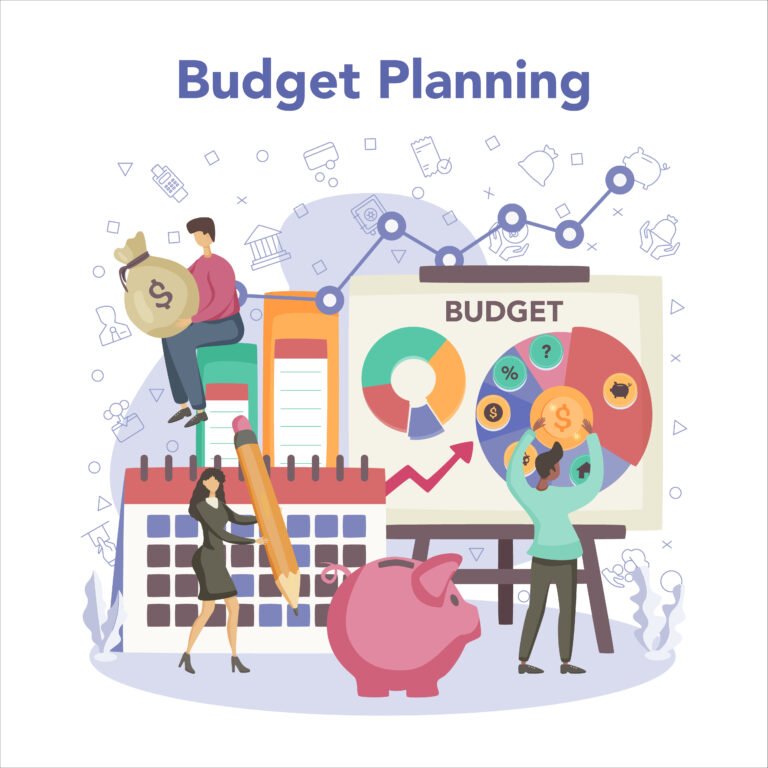The Financial Wake-Up Call
💡 Why I Knew Something Had to Change
50/30/20 Rule: Just three months ago, I was stuck in a cycle I couldn’t escape — money in, money out, and nothing to show for it. Every paycheck vanished before the next one arrived, and I couldn’t figure out why. It wasn’t that I didn’t earn enough — it was that I didn’t have a system. I felt overwhelmed by my finances and ashamed every time I checked my bank balance.

Table of Contents
💸 Struggling With Overspending & Zero Savings
Despite my best intentions, I was overspending on things I didn’t need and under-saving for what actually mattered. My emergency fund was non-existent. Credit card bills made me anxious. And worst of all, I had no roadmap — just vague goals like “save more” or “spend less,” which never stuck. That’s when I stumbled upon the 50/30/20 rule. I decided to give it a real shot for 90 days — and what happened next changed everything.
What Is the 50/30/20 Rule, Really?
🧮 Breaking Down the Formula: Needs, Wants, and Savings
The 50/30/20 rule is a simple yet powerful budgeting method that divides your after-tax income into three clear categories:
- 50% for Needs: These are essentials you must pay for — rent or mortgage, groceries, utilities, transportation, minimum loan payments, and insurance.
- 30% for Wants: This is your lifestyle spending — dining out, entertainment, shopping, subscriptions, travel, etc. It’s about enjoying your money mindfully.
- 20% for Savings & Debt Repayment: This goes toward building your future — emergency fund, investments, retirement, and extra payments on debt beyond the minimums.
Instead of micromanaging every expense, this rule gives you structure and freedom at the same time.
🌍 Why It Works for All Income Levels
What makes this rule so effective is its flexibility. Whether you earn Rs. 40,000 or Rs. 400,000 per month, the percentages stay the same. It scales with your income and offers clarity without needing a finance degree.
Many budgeting plans fail because they’re too rigid or unrealistic — this one is sustainable, intuitive, and surprisingly liberating.
🛠️ Adapting the Rule to Fit Your Life
Of course, no rule is one-size-fits-all. I had to tweak the percentages slightly. For example, in the beginning, I spent closer to 60% on needs because of fixed obligations. That’s okay. The key is to start with the structure and slowly adjust as your situation improves.
You might shift to a 60/20/20 or 50/25/25 split temporarily, or set short-term goals (like building an emergency fund) within the 20% savings portion. The real magic is in the mindset shift — seeing your money as a tool you control, not a stressor that controls you.
Step-by-Step: How I Applied the Rule
📋 Step 1: Tracking Every Rupee Honestly
Before I could apply the 50/30/20 rule, I had to face the truth — and that meant tracking every single rupee I spent. For one full month, I recorded everything. Coffee runs, online subscriptions, utility bills, weekend takeout — nothing was off the record.
I used a simple Google Sheet (though there are apps like Money Manager or Wallet by BudgetBakers too). What I discovered was eye-opening: I wasn’t broke — I was bleeding money through small, mindless purchases.
This step wasn’t about guilt. It was about awareness. Once I saw the full picture, I felt empowered, not overwhelmed.
🗂️ Step 2: Categorizing My Expenses (Needs vs. Wants)
Next, I took all that data and sorted my spending into three buckets: Needs, Wants, and Savings/Debt.
- Needs included things like rent, groceries, my internet bill, and transportation.
- Wants were dinners out, Netflix, spontaneous shopping, and even that unnecessary extra coffee every day.
- Savings/Debt was anything I could stash away or put toward extra credit card payments.
At first, I had to be brutally honest with myself. Did I need two food delivery apps and three streaming services? Nope. By trimming the fat, I created room to breathe financially — and it didn’t feel like a punishment.
🏦 Step 3: Automating My Savings (The 20%)
Once I had my budget broken down, I took the most important step: I automated my savings. Every payday, 20% of my income was automatically transferred into a separate savings account — before I had a chance to spend it.
No thinking, no delay, no “I’ll do it later.” Just consistent, effortless saving.
This single move changed everything. I stopped seeing saving as optional and started treating it as non-negotiable — like paying rent. Within 90 days, I had an emergency fund for the first time in my life.
The First 30 Days: Shaky Start, Small Wins
😩 The Temptation to Give Up
I won’t lie — the first few weeks were rough. After years of financial chaos, sticking to a structured plan felt like going on a diet after bingeing for too long. Every time I saw a sale online or got invited out, my instinct was to swipe the card and “worry about it later.”
There were moments I questioned if this rule was too strict. But every time I opened my budgeting sheet or checked my new savings account, I saw progress. And that progress — no matter how small — kept me going.
✂️ Cutting Back Without Feeling Deprived
One of my biggest fears was that budgeting would suck the joy out of life. But I learned quickly that it’s not about saying no to everything — it’s about saying yes to the things that matter more.
I didn’t stop going out with friends — I just swapped dinners for coffee meetups or movie nights at home. I didn’t cancel every subscription — just the ones I barely used. Small shifts like meal prepping instead of food delivery made a surprisingly big difference.
In fact, I started feeling more in control, not deprived. Every “want” I spent on was intentional — and guilt-free.
🧯 How I Handled Unexpected Expenses
Of course, life threw curveballs. A flat tire. A medical bill. A birthday I forgot to budget for. Normally, these would’ve sent me spiraling into panic mode or debt.
But because I was tracking everything and slowly building savings, I could adjust without derailing. I dipped slightly into my “wants” budget or used part of the 20% savings portion — and made a plan to rebalance the next month.
The rule wasn’t rigid — it was flexible, and that’s what helped me stay on track instead of quitting.
Day 60: Real Progress & Renewed Motivation
📈 Seeing My Emergency Fund Grow
By the second month, something amazing started to happen — my emergency fund wasn’t just a number anymore, it was security. Watching it grow week by week gave me a confidence I hadn’t felt in years. For the first time, I knew that if something unexpected came up, I wouldn’t be financially wrecked.
Even saving Rs. 10,000 or Rs. 15,000 in that short time felt like a major win — because it was mine. No credit cards. No borrowing. Just steady, intentional progress.
😌 Guilt-Free Spending Within My “Wants” Budget
Ironically, giving myself a limited wants budget made me enjoy those purchases more, not less. I no longer felt guilty about treating myself to a nice meal, a new shirt, or a movie night — because it was already planned for.
There’s something freeing about knowing you can enjoy life and be financially responsible at the same time. The 30% buffer kept me from impulse buying, but also reminded me that life isn’t just about saving — it’s about living wisely.
🔁 New Habits That Stuck
By Day 60, the budgeting process started to feel… normal. Even automatic. Here are a few habits that stuck:
- I checked my budget once a week — just 10 minutes to review and adjust.
- I paused before every non-essential purchase and asked: Is this a want or a need?
- I stopped carrying all my cards — one debit card was enough.
- I started enjoying tracking my money — it felt like a game I was winning.
Those small, consistent habits created a sense of momentum. And that momentum fueled my motivation to finish strong.
Day 90: Where I Stand Now
💰 Total Amount Saved in 3 Months
After 90 days of sticking (mostly) to the 50/30/20 rule, I looked at my finances — and the difference was undeniable. I had built a small but solid emergency fund, paid off a chunk of my credit card debt, and most importantly, developed a system I could stick with long term.
In just three months, I had saved more than I had in the last year combined — not by earning more, but by managing better.
🧾 Debt Reduction Milestones
Part of my 20% savings allocation went toward extra debt payments. By doing that consistently each month, I knocked down some lingering credit card debt that had been weighing on me for years.
Seeing those balances shrink was incredibly motivating — and it made me realize how much money I had been losing to interest just because I didn’t have a plan.
🌟 Confidence in My Financial Future
The biggest change wasn’t just in my bank account — it was in my mindset. I no longer felt anxious every time I opened my mobile banking app. I stopped living paycheck to paycheck. I had control, clarity, and confidence.
The 50/30/20 rule didn’t just organize my finances — it transformed my relationship with money. I’m still learning, still adjusting, but now I know exactly where every rupee goes — and why.
Bonus: Tweaks That Made the Rule Work for Me
🔄 The 60/20/20 Version I Switched To
While the classic 50/30/20 rule is a great starting point, real life isn’t always that clean-cut — especially when your cost of living is high or your income isn’t steady. For me, 60/20/20 made more sense in the beginning.
I needed that extra 10% for essentials like rent and transportation. And that was okay — the key was to stay intentional and still keep saving and managing wants within limits. The percentages aren’t the goal — balance is.
💵 Using Cash Envelopes for “Wants”
One small tweak that helped me curb overspending? Cash envelopes. Every month, I’d withdraw my 30% “wants” budget in cash and split it into labeled envelopes — eating out, entertainment, shopping, etc.
Once an envelope was empty, that was it. No swiping cards. No second guesses. It created a natural boundary, and honestly, it made spending feel more real and thoughtful.
📱 Budgeting Tools That Made It Easy
Here are the tools I used that made budgeting feel less like a chore:
- Google Sheets – Simple, customizable, and visual.
- Money Manager App – Easy to track daily expenses on the go.
- Bank Auto Transfers – Automated saving and bill payments kept me disciplined.
You don’t need fancy software — just something that keeps you consistent.
💡 Final Thoughts: Why You Should Try It Too
✅ It’s Simpler Than You Think
You don’t need to be a finance expert to take control of your money. The 50/30/20 rule is simple, clear, and flexible. It gives your money a plan — and it works even if you’ve never budgeted before.
💸 You Don’t Need a High Income to Start
This rule works with any income. In fact, if you’re living on a tighter budget, it becomes even more valuable. It helps you prioritize, stay focused, and stop feeling like your money disappears without explanation.
🚦 Start Small, But Start Today
Don’t wait for a “perfect” month to begin. Start with what you have. Track your spending, try the rule, and adjust it to fit your reality. The point isn’t perfection — it’s progress. I did it in 90 days. So can you.
FAQs: 50/30/20 Budgeting
❓ What If I Have Debt?
If you have debt, the 50/30/20 rule can still work — but with a twist. Use the 20% “savings” portion to pay off debt aggressively (especially high-interest credit cards or personal loans). Once your debt is under control, you can redirect that money into savings or investments.
Tip: If your minimum payments already take up more than 20%, that’s okay. You may need to shift your ratio temporarily to something like 50/20/30 (cutting down “wants”) until you’re in a better place.
❓ Can I Use This If My Income Fluctuates?
Absolutely. If you’re a freelancer, student, or someone with a variable income, try these tweaks:
- Base your budget on your average monthly income over the last 3–6 months.
- Prioritize the “needs” first, then allocate for savings and wants.
- Use windfalls or bonus months to bulk up your emergency fund.
- Build in a “buffer” category for low-income months.
Stability comes from consistency, not perfection — just adjust as you go.
❓ How Do I Stay Motivated?
Motivation comes from seeing progress — no matter how small. Here’s what helped me:
- Track wins weekly: Celebrate when you stick to your budget or hit a savings goal.
- Visual goals: Use a chart, jar, or app to watch your savings or debt shrink.
- Reward yourself (within your 30%) when you reach milestones.
- Remind yourself why you started. Financial freedom is worth the discipline.
You’re not just budgeting — you’re building a future.
Read Also: Crush Your Savings Goals Faster with This Simple Daily Habit






